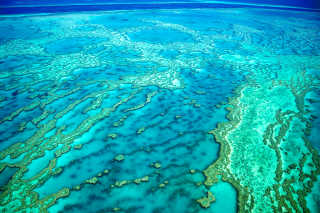World Heritage Sites in the South Pacific
There are several important ecological, historic and cultural treasures in the South Pacific. World Heritage Sites are designated by UNESCO (The United Nations Educational, Scientific and Cultural Organization) and are protected and preserved for their unique flora, fauna, marine life, evidence of cultural development, and geology. These outstanding sites, if left unprotected and lost due to human activities, environmental changes or the consequences of political changes and unrest would result in a loss to humanity. So, let's learn more about World Heritage sites in the South Pacific.
- How many world heritage sites are there in the South Pacific?
- Which country in the South Pacific has the most World Heritage sites?
- Which are the most visited World Heritage sites in the South Pacific?
- Where is the most spiritual World Heritage site in the South Pacific?
- What is the oldest World Heritage site in the South Pacific?
How many world heritage sites are there in the South Pacific?
UNESCO lists 37 World Heritage sites in the South Pacific/Oceania region. These sites are noted as having significant cultural, biological and architectural value to human heritage. The sites are found in 14 different countries, including several located within Australia. Sites like The Great Barrier Reef, Kakadu National Park, the Sydney Opera House, Bikini Atoll, the Hawaii Volcanoes National Park and the New Zealand [sub-antarctic islands](http://whc.unesco.org/en/list/877,%20[Te%20Wahipounamu, and Tongariro National Park are just some of the areas protected by UNESCO. The list includes the world's largest raised coral atoll at Rennell Island and Lake Tegano, the largest lake in the insular Pacific.

Which country in the South Pacific has the most World Heritage sites?
Australia has the highest number of heritage sites in the region. These include the Great Barrier Reef, the Kakadu National Park, the Greater Blue Mountains area, Fraser Island, the Gondwana Rainforests and the Heard and McDonald Islands.

Which are the most visited World Heritage sites in the South Pacific?
The Great Barrier Reef is the most popular World Heritage Site in the South Pacific. This is the world's largest reef stretching for more than 2300 km and made up of more than 900 islands and 2900 reefs. The reef is of immense ecological importance as it recycles carbon dioxide in the atmosphere. It is the world's largest natural structure.

Where is the most spiritual World Heritage site in the South Pacific?
Taputapuātea is located on Ra'iātea Island which is in the middle of the Polynesian Triangle (an area which makes up a large area of the Pacific Ocean and one of the more remote areas of the world). There are two forests set into a valley a lagoon, coral reef and a section of the open ocean within the protected area. The Taputapuātea complex was once a political, ceremonial and funeral center housing different "Marae". Marae are believed to be places where the world of the living intersected with the world of the ancestors and the gods, making this an important cultural and historical monument to the people of this period.

What is the oldest World Heritage site in the South Pacific?
The Kuk Early Agricultural Site in New Guinea is the oldest World Heritage site in the region. This is one of the most archeologically significant human settlements in the world and contains evidence of cultivated lands and irrigation that date back 9,000 years, providing proof of agricultural activities by ancient people. The inhabitants of the area were involved in farming to provide food for themselves. It consists of 116 hectares of swamps and is found at 1500 meters above sea-level.

Plan your next vacation with a list of World Heritage sites to visit
With over 1000 various locations around the world, how about planning your next trip to visit some of these amazing locations in the South Pacific? Whichever country you plan to visit, when the time is right, compare airlines on BudgetAir. Check our best flight deals to worldwide destinations which are the home to some of the world's most awe-inspiring World Heritage sites.